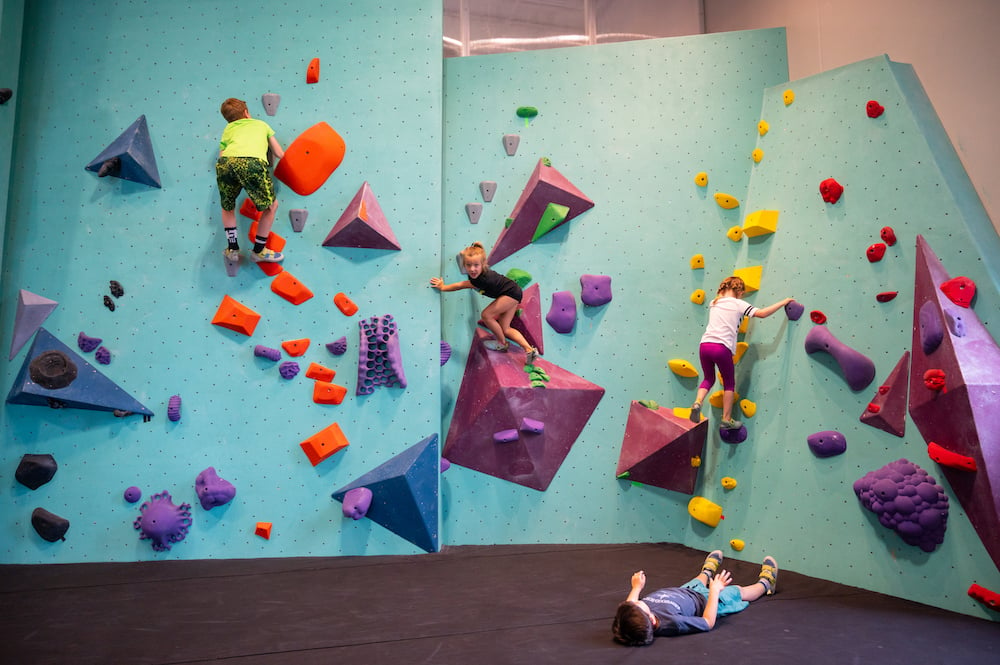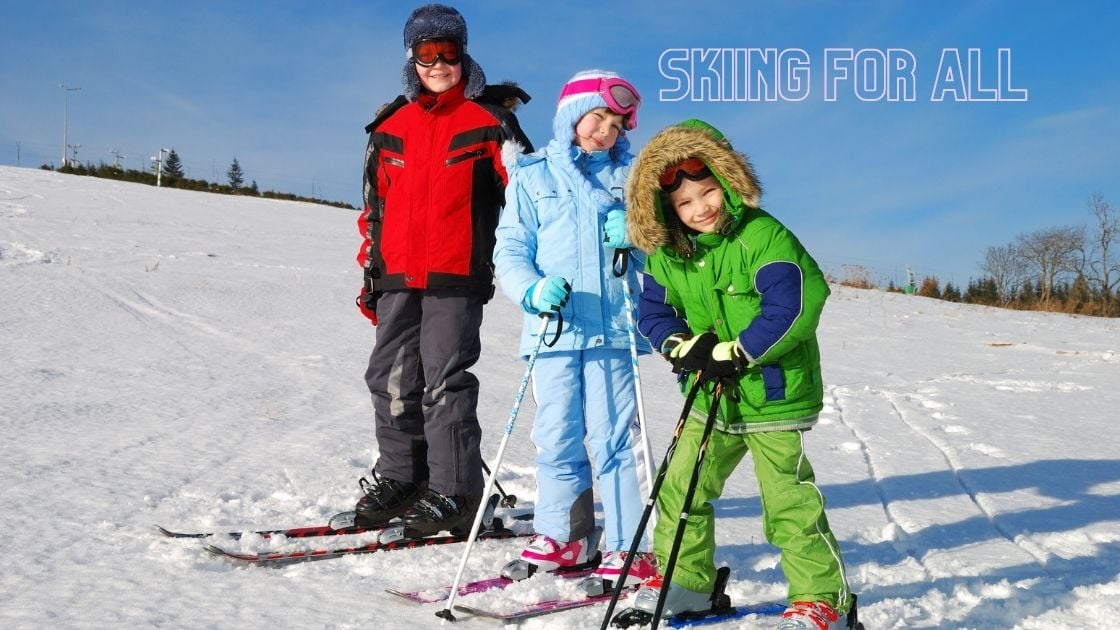Surrounded by aqua-blue walls dotted with colorful climb holds, half a dozen children between the ages of 5 and 7 sit together intently focused on the wall in front of them. Above them, a small boy places a hand on a hold and lifts himself up the wall, which stands only about 15 feet high, but seems impossibly tall compared to the boy.
“Yeah, Jeremiah!” cheers Minneapolis Bouldering Project program manager Isabelle Solvang as she walks past the campers.
The group erupts into exclamations of encouragement and praise as the boy climbs higher and higher.
Though bouldering — rock climbing without the use of ropes or harnesses — is an individual sport, camps focus on the idea of climbing as a team, which requires campers to find ways to support each other and themselves when climbing.
Besides emphasizing the value of supporting one another, climbing as a team also encourages campers to learn from each other without measuring their progress against others.
In addition to climbing, camps at the Minneapolis Bouldering Project (MBP) — a 40,000-square-foot climbing gym and fitness hub — also incorporate traditional games and bonding activities as well as social-emotional learning concepts.
MBP offers half-day, weeklong camps throughout summer for ages 5 to 12.
“We have found that half a day of climbing is plenty,” Solvang said. “Kids are worn out at the end of the day, and they’re still excited to come back the next day.”
Accessibility is a core part of MBP’s mission and staff take pride in introducing campers to bouldering and the climbing community. No prior experience is required to enroll in a camp, and counselors use an individualized approach to every child, which allows children from different backgrounds and abilities to thrive.
“It’s really fun to get kids who like to move their bodies around to try climbing,” Solvang said.
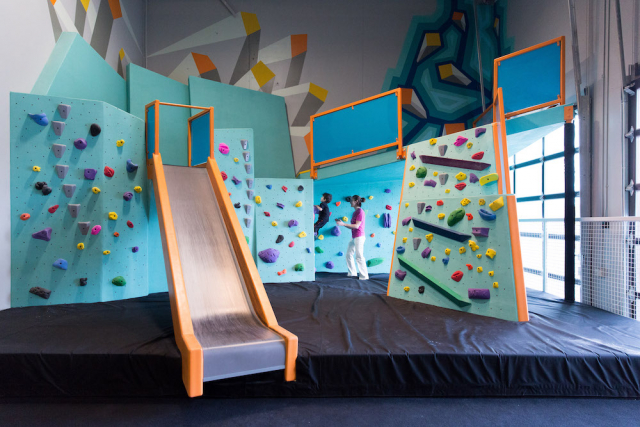
What goes up must come down
Though campers climb boulders that can reach heights up to 17 feet without the use of ropes or harnesses, parents can rest assured that safety is of the utmost importance at MBP.
While part of the allure of bouldering is the thrill of climbing circuits that stretch to the ceiling, being able to climb down is equally crucial.
“We focus a lot on how to come off the walls in a way that you don’t injure yourself, and in a way where you’re comfortable and confident in taking risks,” Solvang said.
Although MBP’s facility — which boasts over 20,000 square feet of climbing terrain — may seem overwhelming at first, everything in the space is color coded and designed so that anyone can walk in and navigate safely and successfully.
MBP also posts its “spiral of difficulty” throughout the building. The spiral details the difficulty of each color-coded circuit. Circuits overlap to help climbers progress and avoid pigeonholing themselves into what they can and can’t do.
Even with these safety nets in place, failure is natural and expected to occur.
“Failure happens, but it’s not really a failure if you’re getting better and doing something you love,” said camp counselor Taber Tang.
By learning to embrace challenges — and persevere despite them — campers develop skills they can carry into other areas of their lives.
“The confidence they build on Day 1 and throughout the week is remarkable,” Solvang said. “And you learn to depend on yourself and you learn to trust yourself.”
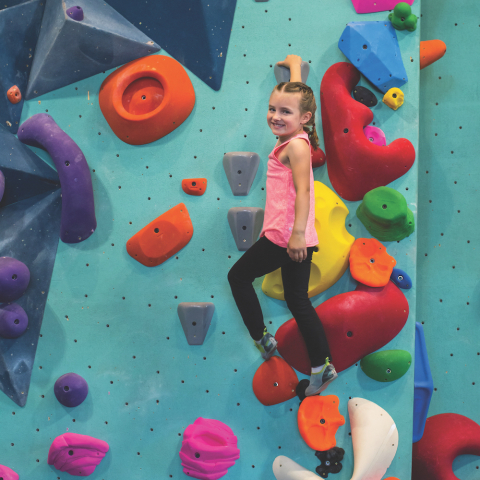
Ready, set, grow!
Completing a bouldering circuit is like solving a puzzle. Bouldering challenges climbers physically and mentally, which means campers often encounter big emotions.
Instead of ignoring these feelings, MBP helps campers understand and acknowledge emotions as part of its social-emotional learning curriculum.
Throughout the weeklong camp, students are encouraged to stay in a growth-zone mindset — to challenge themselves and focus on progress without putting themselves in danger or panicking.
“A huge part of climbing camp is trust,” said camp counselor Chelli Riddiough. “The kids have to trust us because we’re asking them to do really hard and scary things, and so developing a trusting and positive relationship is essential for pushing kids into their growth zone without it feeling like an uncomfortable experience.”
One of the ways counselors foster a trusting relationship is by incorporating a challenge-by-choice concept which empowers campers to decide whether to participate or opt out of any activity.
Additionally, counselors take an individualized approach to working with every camper. This means that campers from any background, such as children with autism or social anxiety or children who don’t come from a climbing family, can succeed and grow.
“Every kid can climb, and I think this camp is a great place for any kid,” Riddiough said.
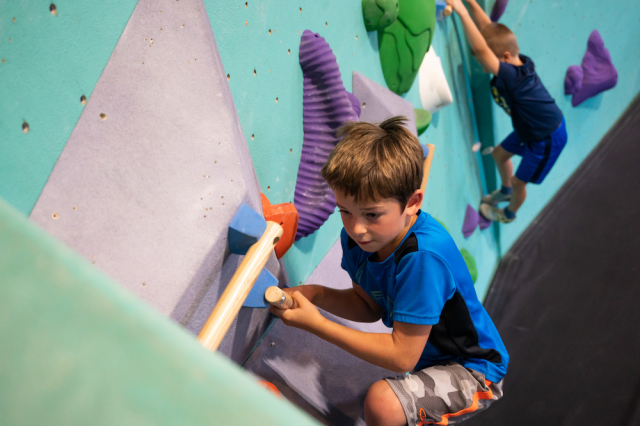
Creating a community
MBP strives to foster meaningful human connection through inspiring and inclusive climbing, movement and community spaces.
Since then, the club has helped nurture the growth of the Minnesota bouldering community, including its littlest climbers.
“I like to climb because it kind of calms me and gives me a sense of how strong I am,” said Shyamana, a 9-year-old camper from Minneapolis. “It’s challenging, but still fun.”
When faced with an especially tough circuit, Shyamana said she either jumps down or tries it, while reminding herself it’s not impossible.
MBP offers its Pebbles Program for ages 3 to 5, and allows children as young as 2 to use the facility. Kids are such natural climbers, they don’t need much instruction before giving it a try. Some toddlers climb before they can walk well.
“When people think of MBP, they think about the community it’s created, and I think kids are an essential part of that — but sometimes not focused on,” said camp counselor Zoe Seitz. “As a counselor, I think [camps] are a really cool way to get kids into climbing and this community.”
Though camps center on bouldering and developing climbing-related skills, such as footwork or mindfulness, campers also partake in group activities, games and even just relaxing.
“We also try to teach them a part of the bouldering culture of chilling out and hanging on the mats because we’re not going to be climbing every second of the day,” Seitz said. “We have a lot of time to chat and hang out on the mats and play funny games.”
While some people may be surprised by the height of boulders children climb, Solvang stressed that the world isn’t child-sized either, adding, “It’s only a handicap if you tell them it is.”
Helen Sabrowsky is a University of Minnesota journalism student. She served as a summer writing intern at Minnesota Parent.





